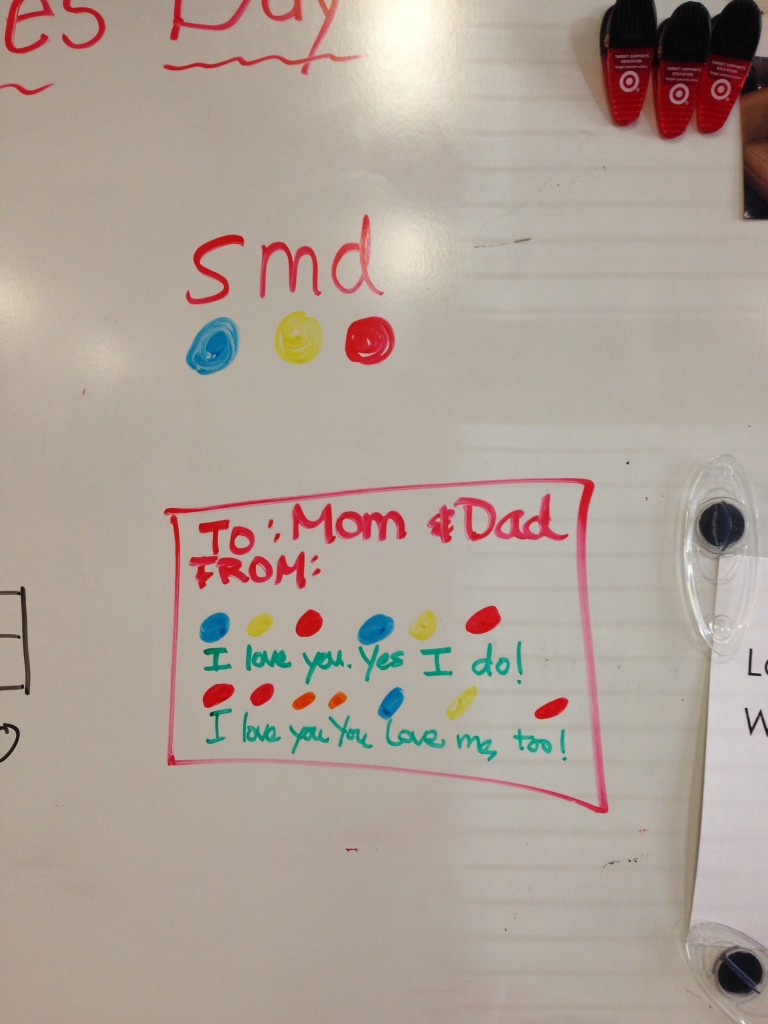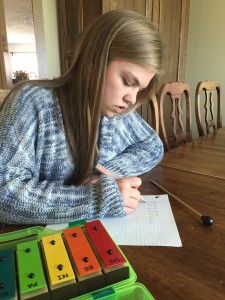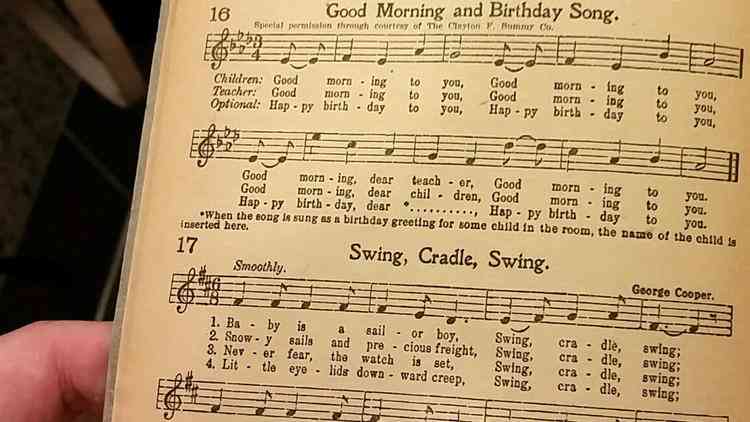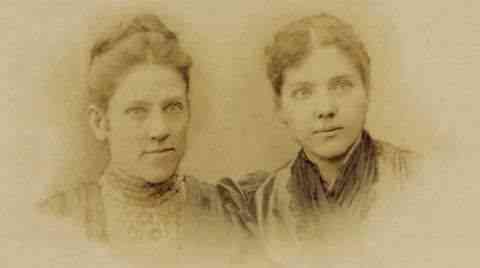Since tomorrow is Valentine’s Day, I had told the children last week that we would write a Valentine’s song. “Can we give it to our mom and dad?” one student questioned eagerly. “Yes!” I confirmed. “You can write it for anyone you want!”

We sang our welcome (theme) song, and then I reviewed what we’d learned in the last two weeks for about 4 minutes. First, I went over beat. “Beat is a steady beat that stays the same and keeps going,” I clapped over my heart. “1-2-3-4. 1-2-3-4. 1-2-3-4.” I said aloud. The children joined it. “You can cover your ear to hear the beat!” one student remembered aloud. “You can also feel it on your heart!” another girl chimed in. “Yes!” I encouraged.
“Then we have rhythm. What is different about rhythm?” I asked. One student responded, “It’s like this!” and tapped out a rhythm on her legs with varying note values. “Yes!” I agreed. “Some notes are short,” I gestured with my hands showing a short horizontal length, “while other notes are longer,” showing a wider space between my hands, “and some notes are longest!” I showed them with my hands about a yard wide apart. “Do you remember our song?” I pulled out “Hot Cross Buns” again, asking the teacher to be our metronome. She clapped our steady beat while we sang. I reminded the students, by pointing to the notes, which notes were 1 beat, which were 2 beats, and which were 4 beats long. We sang it together while I showed the number of each beat in each note.
Then I asked them about melody. “Which one is the melody?” The notes we sang just now, or the other notes we played last week that sounded good? “The notes we sang!” answered one boy. “That’s right!” I told them. And who remembers what the harmony is? “The other notes we played called ‘accompaniment.’ ” “Yes! Wow! Another name for harmony is accompaniment, and it is the notes that sound good with the melody! Does anyone remember which note we played that sounded good with Hot Cross Buns?” “Sol!” a child responded. They remember so well! It is just amazing. I love it!
Then I modeled how to write a song. “We’re going to write our song today. You will have a paper on your desk, and you can write ‘To:’ at the top and put whoever’s name you want to give it to there. Then you can write ‘From:’ and put your name there. Then you need to pick some notes. Hmm. I think I like the notes sol, mi, do.” I played smd. “I could either write s m d on my page, or I could color the notes. Which colors do I use?” I colored a blue dot, a yellow dot, and a red dot. “Then I think I’ll play it again, so I need to write it again.” I colored the dots on my “page” on the white board.
“Now I want to put some words with my notes. I think I like the words, ‘I love you.’ Then I could say, ‘Yes, I do!’ and it would rhyme. That would work!” I wrote the words under the notes. Then I decided which notes to use for my second line and wrote them up under the board, followed by the lyrics below, “I love you. You love me, too!”
I played my song one more time on my bells and sang the words, too. Then I sent the children back to their desks to compose their songs. The teacher and TA helped the children with their songs. We sang our goodbye song before they were done because I had to leave. (I could only teach 20 minutes today. They finished the song after I left.)



